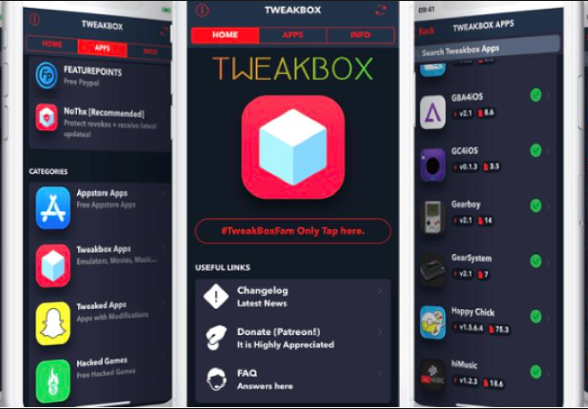

This module generates a programmable time base of one second ( TR_CLK) by using a 20-bit programmable divider. The first module is the RTC prescaler module. It consists of a group of programmable counters divided into two modules. This interface also consists of a set of 16-bit registers that can be read/written by APB1 bus operations. The APB1 bus interface consists of clock dividers and is used to connect with APB1 bus. The RTC comprises of two major components. Shown below is the block diagram of the embedded RTC for a typical STM32F10x microcontroller.
#MODDED GAMES APP IOS SOFTWARE#
Alarm interrupt, for generating a software programmable alarm interrupt.Three dedicated maskable interrupt lines:.The RTC core is reset only by a Backup domain reset.The APB1 interface is reset by system reset.The RTC clock source could be any of the following ones.Two separate clocks: PCLK1 for the APB1 interface and RTC clock.32-bit programmable counter for long-term measurement.Programmable prescaler: division factor up to.Key features of the STM32 embedded RTC are highlighted below: Thus time is not varied or lost during powered down and sleep modes. All VDDs of a STM32 can be turned off or in other words the entire MCU core can be fully shut down but the battery backup keeps the RTC and the backup domain running. It gets even better if there is a battery backup on battery backup ( VBAT) pin. Resetting or waking up the MCU from a sleep/standby mode does not reinitializes time once set. In a STM32 micro, we need to do more than that as no separate date-time registers exist. When using RTC chips, it is only required to read or write individual date-time registers. However more needs to be done on the software end rather than the hardware end. Like with any standard RTC chip, the embedded RTC can be used to provide a full-featured software-based calendar along with alarm functions. The RTC core consists of counters, prescalers, clock dividers, alarm data registers, etc. The embedded RTC of a STM32 micro is an independent binary-coded-decimal (BCD) timer counter.

#MODDED GAMES APP IOS HOW TO#
This tutorial covers basic features of STM32’s internal RTC and how to use it for time-keeping applications. STM32 MCUs come with built-in RTC modules that require no additional hardware support. Fortunately STM32s are in that list of those modern era microcontrollers. Thus cost, time and space are dramatically reduced, resulting smarter, sleeker and smaller affordable devices. Gone are the days when MCUs were manufactured for application specific requirements and also gone are the days of implementing and involving multiple assets in a design. It is only up to a designer to decide which resources to use from a modern-era micro to meet a specific design goal. At present, however, most modern MCUs come packed with literally every possible hardware a designer may think of. Those chips also need some additional circuitry, wiring and circuit board space. In most 8-bit MCUs like the regular PICs and AVRs, there are no built-in RTC modules and so we need to use dedicated RTC chips like the popular DS1302 or PCF8563 when we need an on-board precise time-keeping device. Those were not suitable for precise time-keeping.

Previous to this post, we explored STM32 timers but those were useful for applications like PWM generation, time-bases and other waveform-related tasks. Basically a RTC is a timer-counter but unlike other timers of a MCU it is much more accurate. Examples of such applications apart from clocks and watches include washing machines, medicine dispensers, data loggers, etc. In many applications, especially where precise timed-operations are needed to be performed, a RTC is a very useful tool. A Real Time Clock (RTC) is a timing element dedicated for keeping time.


 0 kommentar(er)
0 kommentar(er)
